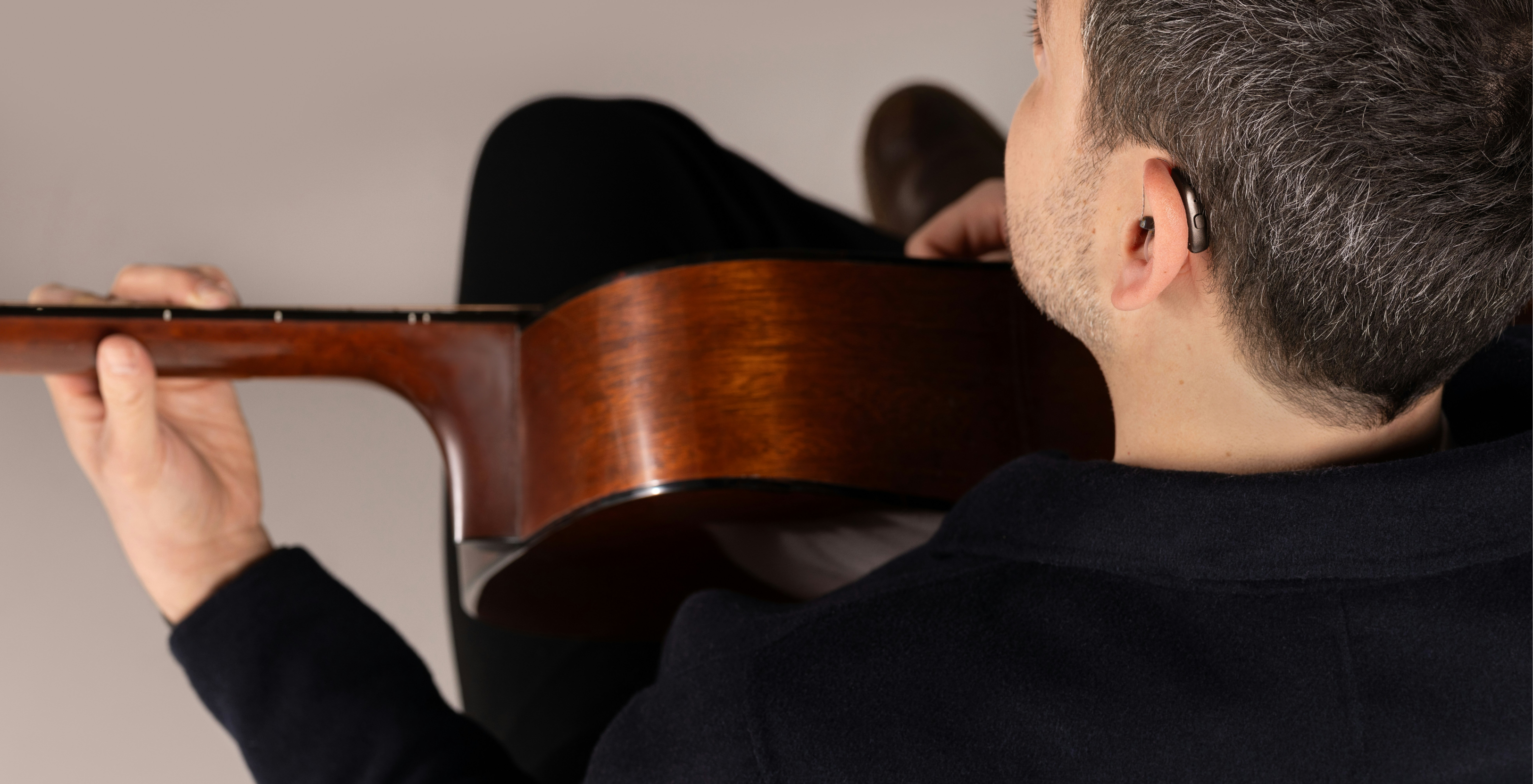1. What Are Hearing Aids?
Hearing aids are small electronic devices designed to amplify sound, making it easier for individuals with hearing loss to hear and communicate. The device typically consists of a microphone, an amplifier, and a speaker. It captures sound from the environment, processes it, and delivers it directly into the ear.
There are various styles of hearing aids, including:
- Behind-the-Ear (BTE): Fits behind the ear and is connected to an earpiece via a tube.
- In-the-Ear (ITE): Custom-made to fit entirely inside the ear.
- Receiver-in-Canal (RIC): Has a discreet speaker placed inside the ear canal.
- Completely-in-Canal (CIC): Fits deep inside the ear canal, making it nearly invisible.
2. How Hearing Aids Work
Hearing aids work by amplifying sound vibrations that enter the ear. Here’s a breakdown of the process:
- Sound Collection: The hearing aid’s microphone picks up sound from the environment.
- Amplification: The amplifier increases the power of the sound signals.
- Sound Delivery: The speaker sends the amplified sound directly into the ear.
Modern hearing aids also come with advanced features like noise reduction, directional microphones, and Bluetooth connectivity for streaming audio from devices like smartphones and TVs.
3. Benefits Of Hearing Aids
Wearing hearing aids can offer numerous benefits, including:
- Improved Communication: Hearing aids make it easier to engage in conversations, especially in noisy environments.
- Enhanced Quality of Life: By restoring your ability to hear, hearing aids can reduce social isolation and improve mental well-being.
- Greater Safety: With better hearing, you’ll be more aware of your surroundings, which is important for safety.
4. Types Of Hearing Aids
There are several types of hearing aids available, depending on the degree of hearing loss and personal preference. Here’s a comparison of the most common styles:
Behind-the-Ear (BTE):
- Pros: Suitable for all ages and degrees of hearing loss, larger battery size for longer life.
- Cons: More visible than other types, can feel bulky.
In-the-Ear (ITE):
- Pros: Discreet and custom-fit, easy to insert and remove.
- Cons: May not be suitable for severe hearing loss, prone to earwax buildup.
Receiver-in-Canal (RIC):
- Pros: Smaller and less visible than BTE, more natural sound quality.
- Cons: Delicate design, may require frequent maintenance.
Completely-in-Canal (CIC):
- Pros: Virtually invisible, best for mild to moderate hearing loss.
- Cons: Shorter battery life, harder to handle due to small size.
Choose the type that fits your lifestyle and hearing needs.
5. How To Choose The Right Hearing Aid
When selecting a hearing aid, consider the following factors:
- Degree of Hearing Loss: Mild, moderate, or severe hearing loss may require different styles of hearing aids.
- Lifestyle: If you lead an active lifestyle, you may need a durable, water-resistant model.
- Technology Features: Look for features like Bluetooth connectivity, rechargeable batteries, and automatic volume adjustment.
- Budget: Hearing aids can vary significantly in price, from basic models to advanced digital options.
Tip: Always consult with an audiologist to ensure the hearing aid is properly fitted and adjusted to your specific hearing needs.
6. Cost Of Hearing Aids In The US
Hearing aids can be a significant investment, with prices ranging from $1,000 to $6,000 per device. Factors affecting the cost include the brand, features, and the type of hearing aid.
- Basic Models: $1,000 – $2,000 per device.
- Mid-Range Models: $2,000 – $4,000 per device, offering more features like noise reduction and directional microphones.
- Premium Models: $4,000 – $6,000 per device, with advanced features such as Bluetooth streaming, artificial intelligence, and rechargeable batteries.
Pro Tip: Some insurance plans and financing options can help cover the cost of hearing aids, so be sure to explore all available options.
7. Common Challenges And Solutions
Adjusting to a hearing aid can take time, and there are a few challenges to be aware of:
- Feedback or Whistling: This can occur if the hearing aid isn’t fitted properly. Visit your audiologist for an adjustment if this happens.
- Battery Life: Hearing aids require regular battery changes or recharging, depending on the model. Consider rechargeable options for convenience.
- Comfort Issues: Some users may experience discomfort when first using hearing aids. Give yourself time to adjust and consult with your audiologist for any necessary tweaks.
8. FAQs For Hearing Aid Users
Q: How long do hearing aids last? A: On average, hearing aids last 3-7 years, depending on the model and how well they are maintained.
Q: Will hearing aids restore my hearing to normal? A: Hearing aids improve sound clarity but do not restore normal hearing. They can, however, significantly improve your ability to hear and communicate.
Q: Can I wear my hearing aids while sleeping? A: It’s generally recommended to remove your hearing aids while sleeping to give your ears a rest and preserve battery life.
9. Final Tips For Successful Hearing Aid Use
- Follow Your Audiologist’s Advice: Regular check-ups and adjustments ensure your hearing aids are working optimally.
- Take Time to Adjust: It may take a few weeks to get used to wearing hearing aids, so be patient with the process.
- Maintain Your Devices: Clean your hearing aids regularly and replace the batteries as needed to avoid malfunctions.
- Explore Advanced Features: Modern hearing aids offer a range of helpful features like Bluetooth for streaming and noise-cancellation for clearer sound.
By choosing the right hearing aid and following these guidelines, you can enjoy improved hearing and a better quality of life.




